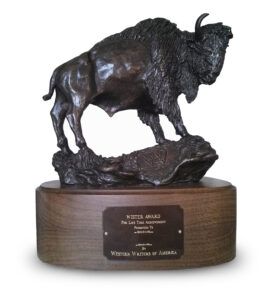Vietnam: From red to green
Even after the Vietnam War ended, the battle against communism continued on. Now, more than 35 years after the end of the war, capitalism appears in many ways to have won over Vietnam. To Americans the country still remains synonymous with the war, yet the Vietnam tourism industry now regularly rolls out the red carpet for Americans and their cash. Today the old American stronghold, then Saigon, now Ho Chi Minh City, has a vibrant nightlife, and its streets feature lavish Louis-Vuitton and Gucci stores and elegant shopping malls.
Vietnam also has exotic tourist destinations including Nha Trang, a resort along the southern seacoast with powdery white beaches, thatched-roof huts and incredibly cheap food and drink. Even Hanoi has seen a transformation. But the Vietnamese capital retains a French cultural identity, with many Hanoians nibbling on freshly baked French bread and coffee amid the roar of motorbikes and scooters.
Despite Vietnam’s economic changes, American visitors are often disturbed by some aspects of the society, in particular citizens’ view of what they refer to as the “American War.” This is perhaps felt most at the Hoa Lo prison, otherwise known as the Hanoi Hilton, where on display are helmets from U.S. pilots shot down, prison garb, and a deck of cards POWs used. It is here that the pilot suit, flight gear and helmet belonging to Arizona senator and U.S. presidential candidate John McCain are prominently displayed. The prison museum also exhibits a generous assortment of propaganda photos from the war, in which tourists see smiling American prisoners playing tennis
and volleyball, eating well and even decorating a tree at Christmastime.
In spite of the seeming political dissonance, most citizens of Vietnam appear to be focused on making money and living well, rather than on ideological and political issues. The United States may have failed to win the war against communism there in the 1960s and ’70s, but in the long run Vietnam seems to have embraced the values of capitalism.
Seeking closure for families of POWs, MIAs
For families that have members missing in action from American wars, the uncertainty is the worst part. The government’s Defense Prisoner of War/Missing Personnel Office (DPMO) was formed in 1993 and regularly hosts “Family Update” meetings across the country. “They come because they want to know what we’re doing, and we want to tell them what we’re doing,” said Larry Greer, director of public affairs for the DPMO.
At a recent Southeast regional “Family Update” meeting in Atlanta this past winter, some 150 families of American soldiers who are missing in action or whose remains have not been identified, going back to World War II, were in attendance. DPMO ambassador Charles A. Ray assured the families that the department’s staff of 600 is working tirelessly to find missing soldiers or identify their remains. He said the DPMO understands the frustration families must feel after all these decades of unsolved mystery. “I know you want closure,” he said.
Greer said the process of locating or identifying the remains of the approximately 88,000 American soldiers who were POWs or are still missing in action is time-consuming. The skeletal remains are taken to a lab at Hickam Air Force Base in Hawaii, where technicians test them for DNA and against medical records.
“Sometimes a single tooth will identify the soldier,” Greer said. The science can be amazing. “We just identified a soldier from World War I,” he said.
Tet: Military victory, political defeat
An exhibition dedicated to the 40th anniversary of the Tet Offensive is currently on display until January 2009 at the South Carolina State Museum.
“TET: Military Victory, Political Defeat” examines the Tet Offensive of early 1968 that was launched by the National Front for the Liberation of South Vietnam (Viet Cong) and the People’s Army of Vietnam (PAVN). The military operation targeted more than 100 cities and villages along with the American Embassy in Saigon, and was the North’s attempt to end the war in a single blow.
Jim Knight, who is the chief curator for the exhibit, is a Vietnam War veteran who was there at the time of the attack. The museum exhibit is “weapon heavy,” says Knight, and is designed to educate visitors about the offensive through displays of weapons, uniforms and pictures of the military attacks.
“Visitors get to see real uniforms and real weapons which were used in the war, experiences that cannot be obtained from textbooks and movies,” Knight says.
For more information: www.museum.state.sc.us
Cu Chi tunnels now a Vietnam theme park
During the Vietnam War, the Viet Cong’s series of underground tunnels in Cu Chi served as a base in their fight against American and South Vietnamese troops. Today, the tunnels are a growing tourist attraction for Western visitors. For years, Viet Cong guerrillas lived in a network of tunnels three stories deep and spanning more than 300 kilometers (186 miles), connecting villages in virtual underground cities in this district north of Saigon.
Today, instead of fearing attacks, Americans who go to Vietnam are visiting the tunnels as tourists. There, they can also blast away—for $1.30 a bullet—at a shooting range set up at what is now the Cu Chi Tunnels Tourist Park. The park contains a souvenir shop that sells war kitsch, and a spot where visitors can have their photos taken atop the rusty shell of an M41 tank that was claimed by a landmine in 1971. The main attraction, however, is the opportunity to crawl through a section of tunnel that has been widened to accommodate Westerners.
Originally published in the June 2008 issue of Vietnam Magazine. To subscribe, click here.




